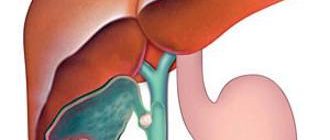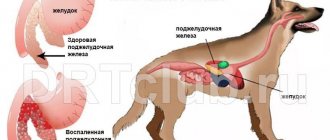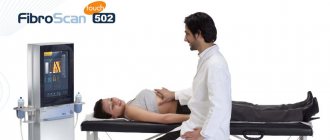Functions of the pancreas
The role of the pancreas is very important
As mentioned above, the pancreas performs many very important functions that allow the body to function as it should. The main functions that the gland performs include:
- The production of enzymes, that is, direct participation in the digestion process. If at least one enzyme is produced in smaller or larger quantities, this can lead to irreversible processes due to which the body will experience enormous stress
- Regulation in the metabolic process, namely the production of insulin cells
If a problem arises with the performance of at least one of the above functions, then the process of digestion and metabolism is disrupted, and it is very difficult to restore it for the reason that disturbances cannot always be noticed immediately. Most often they are discovered when nothing can be done.
In order to ensure the normal performance of its functions by the pancreas, you just need to eat right. It is proper and healthy food that has a positive effect on the production of all necessary enzymes.
Where to get tested for diabetes in St. Petersburg
You can get tested for type 2 diabetes at the Diana Clinic in St. Petersburg. Here you can also undergo an ultrasound of the pancreas using a new expert device. After this, you can consult an experienced endocrinologist.
Endocrinologists at the Diana Clinic take a comprehensive approach to the treatment of non-insulin-dependent diabetes mellitus, combining proper nutrition, giving up bad habits and physical activity with rationally selected medications.
Make an appointment with a gynecologist by calling 8-800-707-1560, request a call back or fill out the appointment form on the page!
Symptoms and signs of pancreatic disease
Very often, people ignore any manifestation of pain in the upper abdomen, thinking that it will go away on its own. But, unfortunately, any pain, even short-term, is not normal; it indicates that there are some problems with the pancreas. One of the main signs that a gland disease is developing will be weight loss, and when a person eats normally and does not adhere to any diet.
Among the main signs of disease, causeless attacks of nausea and sometimes vomiting also stand out. For an absolutely healthy person, this will be a complete surprise and will attract attention. The appearance of nausea indicates that the digestive processes are disrupted, and thus vomiting or nausea is provoked. There are many diseases of the pancreas that have their own special symptoms. The main symptoms of manifestation include:
- Pain that appears very sharply and is localized approximately in the area of the lower ribs, and from the back
- Pain that seems to envelop. It becomes more and more unbearable every minute, and the person cannot even move
- The emergence of a gag reflex, which mainly appears at the moment when the very peak of a pain attack is felt. At this moment, a person may vomit more than once, and the vomit will have a sour smell, which indicates a violation of the alkaline environment in the stomach
- Poor appetite. A person may even give up his favorite foods and reduce the number of meals a day to one, because he simply does not feel like eating
- Increased body temperature, which occurs with severe inflammation of the pancreas
- Pain subsides when a person bends forward. The pain can either go away completely or subside until the person returns to their previous position.
In some cases, symptoms develop so quickly that a person cannot even really understand what happened. In such a situation, you should immediately call an ambulance, since in most cases urgent hospitalization of the patient is required.
Treatment methods
Currently, there is no way to eliminate the cause of the disease and completely cure diabetes mellitus. Therefore, diabetics are prescribed symptomatic treatment aimed at getting rid of unpleasant symptoms, maintaining stable glucose levels, normalizing body weight and preventing complications.
For type 1 diabetes mellitus, insulin therapy is prescribed, and for type 2 diabetes, sugar-lowering drugs are prescribed. Moderate physical activity and proper diet are important for successful treatment.
Causes of diseases
Examination of the patient
Basically, the main cause of problems with the pancreas is an unhealthy lifestyle, that is, alcohol abuse or excessive smoking. In addition, diet plays a huge role. If a person primarily eats only very fatty and spicy foods, then his chances of developing problems with the gland increase. The main causes of various problems and diseases with the pancreas include:
- Problems with the duodenum. In the human body, everything is closely interconnected. And if a failure occurs in one place, it will certainly affect another organ.
- Previous operations on the stomach or other organ of the gastrointestinal tract
- Received abdominal injury
- Taking medications that can become the main cause of inhibition of pancreatic functions and, as a consequence, the development of diseases
- Penetration of infections into the body. Quite often, an adult may not pay attention to a slight ailment, although it will indicate that an infection has entered the body. And, as a rule, such infections are the causes of pancreatic dysfunction
- Congenital anomalies in the pancreas. This usually includes either excessive narrowing of the bile duct, or, conversely, its expansion
- Metabolic problems that lead to the development of other diseases, since the organs do not receive enough necessary substances, or, conversely, receive them in greater quantities than required
- Hormonal imbalance. This can happen due to stress, as well as due to the development of other diseases.
- Problems with blood vessels. Vascular diseases lead to the fact that the blood supply to some organs is reduced, thereby reducing the amount of nutrients and essential microelements supplied to them
- Heredity. As a rule, those children whose parents suffer from pancreatic diseases are likely to also become owners of these ailments
There are many reasons for the development of diseases of this organ, and in fact, it is very difficult to control everything. That is why, if any pain attack occurs, even if it is tolerable and not severe, you must immediately consult a doctor for advice, since only he will be able to make an accurate diagnosis and find out the problem.
Autophagy
- Cellular damage and apoptosis are associated with autophagy, the process of removing damaged organelles from the cell through lysosomal degradation and the formation of new ones in their place.
- Some diseases, including diabetes, are believed to have multiple etiologies. In particular, autophagy is called among the reasons.
- Studies examining the relationship between diabetes and autophagy in humans have found that when β cells and islet cells of Langerhans are exposed to hyperglycemia or hyperlipidemia, autophagy stops.
- This leads to the accumulation of oxidized, damaged or incorrectly folded proteins in cells.
- β death is also observed as a result of oxidative stress.
- The process of autophagy is regulated by various signals.
- The mTOR signaling complexes 1 and 2 proteins (mTORC1 and mTORC2) are of particular importance in the mechanism.
- These proteins are kinases involved in several cellular processes, for example: the formation of insulin resistance (IR);
- adipogenesis;
- angiogenesis;
- autophagy.
- improper protein folding;
Pancreatitis
Pain as one of the main symptoms of pancreatic disease
One of the most common diseases of this organ is pancreatitis. Pancreatitis is a fairly severe inflammation of all tissues of the pancreas. There are two forms of pancreatitis - acute and chronic. The following signs and symptoms are characteristic of the acute form of pancreatitis:
How to restore the pancreas with diabetes: treatment and improvement
The pancreas is a complex organ; it is responsible for performing endocrine and digestive functions in the body. The juice and hormones produced participate in metabolic phenomena. Due to changes in the functionality of the organ, serious diseases appear, for example, pancreatitis or diabetes. Patients undergoing treatment often ask how to restore the pancreas in diabetes mellitus.
ul
- 1 How the disease develops
- 2 Symptoms
- 3 Diabetes mellitus and pancreas treatment methods 3.1 Treatment with medications
- 3.2 Surgery
- 3.3 Massage of the pancreas for diabetes
- 3.4 Exercise
- 6.1 Alcohol tincture
How the disease develops
There are 2 diseases, their appearance adversely affects the activity of the pancreas - diabetes and pancreatitis. Diabetes and the pancreas have a connection with each other. To control your well-being, you should understand how to treat the gland when there are changes in its activity.
Often, the appearance of diabetes occurs when disorders of the endocrine function of the pancreas occur. Organ of complex structure. The islets of Langerhans cover 2% of the organ's size, which are responsible for the production of hormones required for natural metabolic processes.
When the beta cells present in the islets undergo breakdown, a lack of insulin develops to process glucose. An excess of the hormone produced leads to the formation of a hypoglycemic state, and a deficiency leads to an increase in the presence of insulin in the circulatory system.
Factors that damage beta cells include various pathologies, and often the destruction of the islets of Langerhans is provoked by pancreatitis.
Due to the appearance of inflammation, there is a cessation of release of pancreatic enzymes into the duodenum. They linger in the body of the gland and begin to digest themselves.
The causes of inflammation include:
- poisoning;
- hit;
- fungal and gallstone diseases.
However, a common problem of pancreatitis is diagnosed in people who abuse alcohol. The disease also occurs after surgical treatment of the pancreas.
The danger of pancreatitis is that the disease is easily confused with simple poisoning. The attack disappears, the patient does not seek therapy, and then the disease becomes chronic. The inflammatory process gradually has a destructive effect on beta cells, leading to glucose deficiency.
Violation of the pancreas is accompanied by signs:
- painful manifestations in the abdominal area;
- the occurrence of problems with stool.
The primary formation of the inflammatory phenomenon is characterized by pain syndromes of varying severity, which can manifest themselves in different areas.
The duration of the primary manifestation of pancreatic disease is about 10 years.
- Painful discomfort occurs under the right rib and epigastrium, when the head of the pancreas is more affected or has spread to the body.
- Formation in the epigastric region and on the left side of the rib indicates damage to the body with possible involvement of the tail.
- Pain under the ribs radiating to the lumbar region, arm, jaw, similar to pain like angina pectoris, girdling manifestations appear during complete damage to all parts of the pancreas involving the abdominal cavity.
When the pain gets worse, it happens:
- strong;
- paroxysmal;
- piercing.
When the next stage develops, the victim experiences bouts of vomiting, heartburn, bloating, nausea and diarrhea. When the pathology is neglected, difficulties in treatment occur, since cell decay is observed and a sugar habit is formed.
The blood glucose level rises after eating; in other situations, the insulin ratio is normal.
In the presence of stage 2 diabetes, a chronic form of pancreatitis is often detected. The disease appears due to changes in pancreatic activity due to damage and when glucose increases. The patient feels acute pain in the abdominal area, and a change in the functioning of the digestive system occurs.
Pancreatitis and stage 2 diabetes are characterized as follows:
- the patient sometimes experiences an exacerbation, the pathology goes into remission;
- changes in metabolic phenomena are identified;
- The doctor reveals the development of stage 2 diabetes.
ul
Symptoms
The development of pain in the pancreas in the pathology of diabetes does not occur in the initial stages. The organ hurts a little later, when pancreatitis appears. When it first occurs, it is possible to provide assistance to the victim if an examination is immediately carried out and therapy is prescribed. Sometimes, if a serious form of pancreatitis becomes a factor in diabetes, the gland begins to hurt during pancreatic attacks and the glucose level increases.
In addition to pain in diabetes, short-term pain discomfort occurs as a reaction to foods taken, or indicating another disease. If the severity of the pain syndrome varies, even if it is not expressed, go to a doctor to be examined, since with diabetes the pain threshold decreases - pain is felt even with insignificant or critical changes that require immediate medical intervention.
If treatment is not started in time, the situation will lead to the development of painful shock.
Due to severe inflammation, the patient’s health worsens. The disease can:
- increase and decrease pressure coefficient;
- the temperature coefficient increases;
- the skin becomes pale;
- the patient is feeling sick;
- very dry mouth;
- the victim vomits bile.
When such a disease is detected, the patient needs to adhere to a diet for a couple of days, then the gland is treated for diabetes.
In addition, the patient may have symptoms:
- diarrhea;
- constipation;
- shortness of breath occurs;
- heavy sweating, often after vomiting;
- bloating due to the impossible normal contraction of the intestines and stomach.
Affected gland syndrome includes a bluish tint of the skin in the lumbar or navel area.
In case of minor changes in the functioning of the pancreas, signs of poor health may be caused by complications of pancreatitis. The reasons that provoke pain in diabetes include:
- stomach ulcer;
- ketoacidosis;
- liver diseases;
- response to the use of Metformin due to malnutrition or a diabetic taking biguanides with alcohol.
How to restore the pancreas with diabetes? At this stage, there are no medicinal methods for restoring pancreatic activity when the victim has diabetes. However, it is possible to revive organ cells. This includes bone marrow transplantation or manipulations with the least threat.
ul
Diabetes mellitus and pancreas treatment methods
Treatment of the organ for diabetes pathology takes place under the supervision of a physician. Only a doctor can choose the right treatment plan that will be effective in every situation.
When a pancreatic disorder occurs in type 2 diabetes, it is most often possible to avoid prescribing glucose. The production of the hormone in the required quantity is ensured through physical exercise and rational consumption of products. The table is based on low carbohydrate foods.
If the victim has type 1, then the situation is somewhat different. The main task is to find methods for renewing beta cells in the required volume so that the pancreas functions correctly.
The patient requires complex therapy, which consists of:
- from the dietary table;
- use of medications;
- massage;
- exercises;
- in severe situations, surgical intervention.
An endocrinologist can also prescribe folk recipes, if glycemia is low, with the use of medicinal herbs that affect insulin levels.
Treatment with medications
Complex treatment with pancreatic medications for diabetes is considered therapy as the main method of recovery. The patient is being treated by a gastroenterologist and endocrinologist; he is prescribed the use of sugar-lowering drugs, vitamins, and nootropics due to damage to vascular and nervous structures. The range of treatment will be determined by glycemia and the resulting worsening of diabetes.
How to treat the pancreas with diabetes:
- If you feel pain in the abdomen, you need to take antispasmodics and pain-relieving medications - Papaverine, No-shpa.
- To support the activity of the gland, you need to take medications - Mezim, Pancreatin, Digestal.
- Antibacterial treatment is required to prevent infection. The doctor prescribes mild antibiotics.
- If there is stage 2, Metformin 500 will be indispensable. In addition to the drug, diabetics should take Dibikor. It affects the damaged organ and normalizes metabolic processes.
- Antisecretory drugs that have different mechanisms of action - drugs that suppress mucosal hydrochloric acid, H-2 histamine receptor blockers, anacides.
Surgery
Pancreas transplantation for diabetes is a difficult and unsafe task, however, such a maneuver allows the renewal of beta cells.
During clinical examinations, the victims underwent transplantation of cells from the islets of Langerhans from a donor. This made it possible to restore the body’s ability to correct carbohydrate levels. In the period after surgery, immunosuppressive treatment is carried out.
Transplantation is not performed if:
- difficulties arise in finding a suitable organ;
- high sensitivity of the gland to lack of oxygen;
- tuberculosis;
- AIDS;
- there is a cancerous tumor;
- deviations at the psychiatric level;
- taking drugs, alcohol, smoking;
- difficulties with the liver and lungs.
Another method is xenotransplantation, which involves transplanting a pig organ. Its extracts were used to treat diabetes before insulin was discovered.
Pancreas massage for diabetes
General massage is often prescribed. The manipulation is carried out with medium force, all methods can be used. Thanks to the manipulation, the victim’s condition improves:
- There is an acceleration of metabolism.
- Performance increases.
- The insulin ratio decreases.
The course consists of 30 manipulations.
Carrying out physical exercises
In type 1 diabetics, insulin levels in the circulatory system constantly fluctuate. To increase glucose, physical exercise is necessary. Exercises are selected carefully. The selection of the program is carried out by a doctor.
Exercising for stage 2 diabetes is a real cure. Exercise helps increase the vulnerability of cells to sugar and stimulates the production of hormones.
ul
How to restore pancreas function with diet
Repeatedly, victims are interested in whether it is possible to resume the work of a diseased organ, how to treat the pancreas in diabetes mellitus, how to lower the glucose ratio.
To recover, take medications and eat healthy foods that help the pancreas regenerate. The recovery period for illness is long, therefore it is necessary to adhere to the rules of nutrition for pancreatitis in order to improve the functioning of the organ, adhere to the proportions of consumption of fats, proteins and carbohydrates.
- It is allowed to consume carbohydrates in the amount of 300 g, proteins 100 g. and fats 60 grams.
- You need to eat food often 5-6 times throughout the day, in small portions.
- Diabetic patients should eat boiled, steamed food.
- Avoid fried foods completely.
- Stew, bake, perhaps during remission.
- It is prohibited to season dishes with those spices that lead to a stimulating effect on the intestinal mucosa.
- If there is an exacerbation of the pathology and during therapy, it is unacceptable to eat fatty, spicy, smoked foods, and baked goods.
Before treating a disease, you should consult a doctor, as complications of the disease are possible.
ul
Effect of propolis on the pancreas
Beekeeping products are distinguished by a large number of useful and nutritious substances. It stimulates metabolic processes, normalizes the internal environment of the body, and cleanses of toxins and waste.
Propolis is often used as a healing agent for inflammation of the pancreas, which is influenced by the beneficial properties of the product:
- elimination of symptoms of the inflammatory reaction, the primary stages of necrosis;
- creation of protective barriers in response to the aggressive action of hydrochloric acid in gastric juice;
- fight against bacteria that accompany inflammatory processes, which prevents the development of a secondary infection;
- improving the processing of protein substances;
- protection of the mucous membranes of the stomach and intestines;
- stimulation of the production of digestive enzymes;
- strengthening the regenerative abilities of tissues;
- activation of the normal functioning of liver cells, which directly affect the functioning of the pancreas;
- normalization of bile composition, improvement of outflow into the intestinal lumen;
- improves the overall functioning of the gastrointestinal tract.
The presented properties are determined by the presence of vitamins, minerals, trace elements and other useful substances in the bee glue. For example, flavonoids reduce pain. Propolis brings no less benefits than honey, which makes this product a valuable medicine.
ul
Recipes for treating the pancreas with propolis
The first stage of treatment is switching to a diet prescribed by a doctor. This will reduce the load on the pancreas. To do this, you will have to eat small portions, exclude sweets, baked goods, spicy and salty foods, and alcohol.
Propolis for the pancreas is included in traditional medicine recipes or used in its pure form. An infusion of alcohol or water is common. Milk and decoctions of medicinal herbs are often added to the base. If used correctly, it will be possible to reduce the frequency of acute attacks.
Alcohol tincture
Alcohol tincture is a common folk remedy for the treatment of pancreatitis. Step by step recipe:
- Grind the propolis, place the shavings (50 grams) in a container.
- Pour medical alcohol (100 ml).
- Let it brew in a dark, cool place for 14 days.
- Strain and bottle.
To achieve a therapeutic effect, it is recommended to use 8–10 drops diluted in 150 ml of boiled water. Over time, the dosage is increased to 30–40 drops. The medication is taken before meals.
Tincture without alcohol
An infusion of alcohol is not suitable for use in patients with acute attacks of pancreatitis. In this situation, ordinary water is used as the liquid base. Step-by-step preparation:
- Grate propolis, place the shavings (10 grams) in a container.
- Add boiled water (100 ml) cooled to 60 degrees.
- Close the container tightly.
- Leave in a dark, cool place for 2 days.
Propolis tincture in water is no less effective for pancreatitis than an alcohol solution. Drink a tablespoon twice a day for 2 weeks.
Propolis with chamomile
Step-by-step preparation of the medicinal mixture:
- Make an aqueous infusion of bee glue.
- Prepare a decoction of medicinal chamomile.
- Mix 40 drops of propolis infusion with a glass (200–250 ml) of chamomile solution;
- Drink the medicine after eating food three times a day.
The prepared product relieves spasms and pain, and reduces the manifestations of the inflammatory reaction. Chamomile exhibits the following beneficial properties: stimulation of the production of protective secretions, inhibition of fermentation processes, elimination of gas formation.
Natural propolis
To eliminate inflammation, pure bee glue is suitable. In this form, the concentration of nutrients will be maximum. Directions for use: Place the natural product (10–20 grams) in the mouth and chew thoroughly. Average duration – 1 hour.
Propolis in its pure form is recommended for chronic disease, when exacerbations occur rarely. Treatment with a bee product will relieve unpleasant symptoms (bloating, heartburn, cramps, nausea), and will start the process of tissue restoration.
Propolis with milk
Milk with propolis is a common medicine. Consumption is carried out by mixing prepared or purchased alcohol tincture (10%) with a slightly warmed drink. The duration of the course is 14 days.
In the acute stage, infusion with alcohol is prohibited, so propolis shavings (3 grams) are diluted in a glass with cow or goat milk. The duration of treatment is also 2 weeks.
ul
Contraindications
Contraindications to the use of bee glue:
- allergy to components of beekeeping products;
- period of pregnancy and feeding of the child;
- diseases of the heart and blood vessels;
- exacerbation of the disease (for alcohol tincture).
Treatment of pancreatitis with folk remedies with propolis has become established in traditional medicine. This product is considered a natural source of beneficial substances that can cope with the unpleasant symptoms of the disease. Before use, consultation with a doctor is required.
ul
Diabetes
Pancreas as a vital organ
Diabetes mellitus is another of the most common diseases of the pancreas, which is associated with the lack of insulin production. In most cases, diabetes develops gradually, thereby sometimes smoothing out all the symptoms and allowing the person to get used to them. And this is very dangerous. The main signs that a person has diabetes include:
- Feeling of dry mouth. Moreover, the feeling will be constant, and even if you drink a large amount of water, it will not go away
- Increased urine output
- A sharp increase, and in some cases a sharp decrease in a person’s weight
- Dry skin
- Formation of pustules on the skin
- Constant feeling of muscle weakness
- Severe, even small wounds take a very long time to heal
If the disease has progressed to a more severe stage, then the person’s vision may deteriorate, wounds begin to appear that take a very long time to heal, constant headaches are tormented, consciousness is impaired, and a persistent smell of acetone is felt from the person’s skin. The main causes of diabetes include:
- Heredity. Those at risk are those whose parents or grandparents had this disease
- Excess weight
- Stress
- Age. Scientists have proven that the older a person is, the more likely he is to develop diabetes.
Due to the fact that the body stops producing insulin, it needs to be replenished. Quite often, patients are prescribed insulin injections. If the stage of diabetes is mild, then you can get by by taking pills or following a strict diet.
Classification of pathology
Depending on the cause of the disease, there are 2 main types of diabetes mellitus: insulin-dependent (type 1) and non-insulin-dependent (type 2). In insulin-dependent diabetes, the pancreas does not synthesize insulin or produces it in insufficient quantities, and in non-insulin-dependent diabetes, tissue sensitivity to insulin decreases.
Additionally, a distinction is made between secondary diabetes (develops against the background of other diseases) and gestational diabetes (occurs in pregnant women).
Depending on compensation, diabetes mellitus is:
- compensated - carbohydrate metabolism is normalized, and glucose concentration approaches normal;
- subcompensated – blood sugar levels periodically increase or decrease;
- decompensated - neither diet nor medications can lower glucose, which is why diabetics often develop precoma or coma, which can lead to death.
To successfully compensate for diabetes, it is important to regularly measure blood sugar levels and make timely adjustments to treatment.









